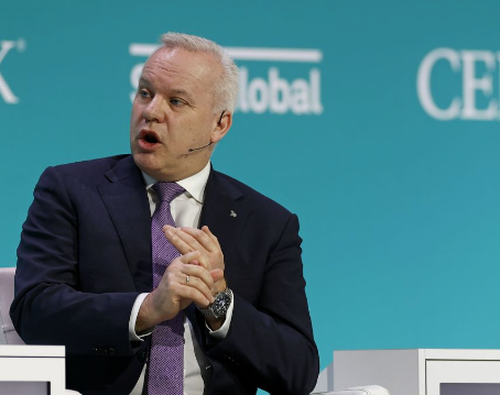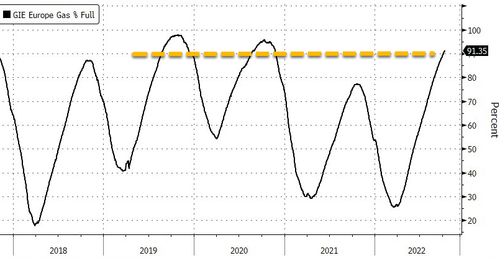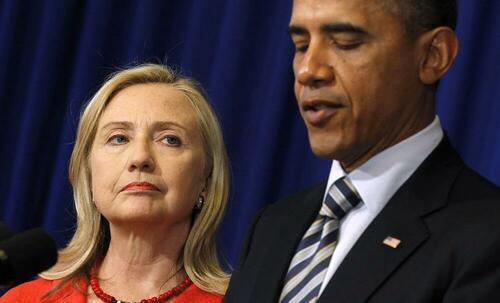Steve Bull's Blog, page 172
October 29, 2022
Massive Protest By Czechs Targets Russia Sanctions, High Prices
Fed up with soaring food, energy and housing costs, tens of thousands of Czech protestors railed against their government on Friday, demanding the resignation of conservative Prime Minister Petr Fiala’s government, withdrawal from NATO and the negotiation of gas purchases from Russia.
“This is a new national revival and its goal is for the Czech Republic to be independent,” said organizer Ladislav Vrabel. “When I see a full square, no one can stop this.”
The protests occurred both in the capital city of Prague as well as the second-largest Czech city of Brno. Organized under the slogan of “Czech Republic First,” the demonstrations drew their strength from both the left and right wings of Czech politics.
“Russia’s not our enemy, the government of warmongers is the enemy,” one speaker said, according to the Associated Press. Czechia has donated tanks and other heavy weapons to Ukraine, and provided nearly a half million visas to Ukrainian refugees, along with benefits. Protest organizers are also demanding that the refugees not be granted permanent residency.
The protest was the third in a series organized by a group demanding Czechia’s withdrawal from NATO and better relations with Russia. As observed in the United States, the Czech government has attempted to marginalize the by calling them “pro-Kremlin propagandist narratives.”
The Czech government has tried to battle the rising prices with aid to businesses and household electricity price caps.
Friday’s protests were part of a rising wave of discontent throughout Europe. On Thursday, thousands protested in France, demanding higher wages to offset the rising cost of living — among them, striking teachers, healthcare providers and railway workers. Recent weeks have seen similar protests in Germany, Austria and Belgium too.
…click on the above link to read the rest…
Russia Accuses British Navy Of Nord Stream “Terrorist Attack”
Russia’s defense ministry on Saturday issued a statement charging that the British Navy blew up the Nord Stream gas pipelines last month, in what marks the first formal and direct accusation leveled against the UK over the major incident which put Europe’s energy supplies in doubt.
“According to available information, representatives of this unit of the British Navy took part in the planning, provision and implementation of a terrorist attack in the Baltic Sea on September 26 this year – blowing up the Nord Stream 1 and Nord Stream 2 gas pipelines,” the ministry said, though without specifying any evidence.
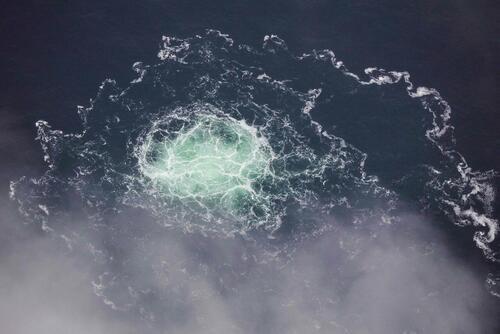 AFP/Getty Images
AFP/Getty ImagesThe Kremlin earlier in a more broad accusation pointed the finger at NATO countries, including Britain, saying that NATO forces had conducted military exercises around the exact location the undersea explosions occurred. The accusation follows a Russian Foreign Ministry claim that NATO conducted a military exercise during the summer, close to the location where the undersea explosions occurred.
“In July, there were NATO drills with the use of deep-sea equipment in the area of the island of Bornholm,” a foreign ministry briefing said days after the Sept.26 blasts. Spokeswoman Maria Zakharovathe said the region “was crammed with NATO infrastructure” at the time of the sabotage attack.
In follow-up during his annexation of the four Ukrainian territories speech on Sept.30, President Putin mounted this attack on the West:
Putin claimed that the “Anglo-Saxons” in the West have turned from sanctions on Russia to “terror attacks,” sabotaging the Nord Stream 1 and 2 pipelines in what he described as an attempt to “destroy the European energy infrastructure.”
He added that “those who profit from it have done it,” without naming a specific country.
…click on the above link to read the rest…
Norway’s Top Energy Exec Warns EU’s Supply Crunch Won’t Be Solved With Price Caps
EU energy commissioner Kadri Simson said Wednesday that natural gas price caps could limit excessive price spikes but only if countries give Brussels the power to impose such a measure. Norway’s top energy firm responded to the proposal in an interview with Bloomberg on Friday, saying price caps won’t solve Europe’s supply crunch.
Earlier this week, Simson, the bloc’s energy chief, said a NatGas price cap would limit price spikes this winter. The official said the measure would be a “last resort measure” if prices uncontrollably soared.
“This Dutch TTF gas benchmark cap, we can introduce this winter already if we get the mandate,” Simson told a committee of EU lawmakers.
Responding to the EU mulling over the idea of a price cap on wholesale NatGas, Equinor Chief Executive Officer Anders Opedal told Bloomberg:
“Any price cap is not really solving the fundamental problems.
“In fact, it can be counterproductive increasing demand while supply is not increasing.”
Since the war in Ukraine and dwindling Russian NatGas supplies to Europe, Norway has displaced Russia as the top NatGas supplier. Rejiggering energy supply chains away from Russia will mean the EU must increase investments in the grid — though price caps deter such investments by energy firms.
And it’s not just investments. Price caps can also cause demand for NatGas to artificially rise or leave some countries struggling to attract supply from global markets. These measures, if implemented, could cause undesirable disruptions to global energy markets.
For Europe, there is good news (for now). Temperatures are expected to be warmer than normal through at least mid-November. Also, NatGas storage in the EU is 91% full despite reduced NatGas flows.
…click on the above link to read the rest…
Hydrogen hopium: Storage
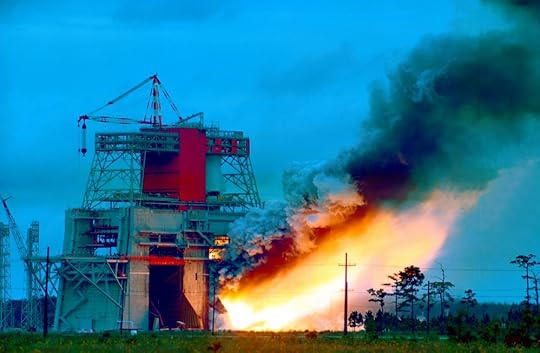
Preface.
Preface. What is hopium? Irrational or unwarranted optimism. An addiction to false hopes. A metaphorical substance that causes people to believe in a false hope (H + opium). And Hopium makes fuel cell hydrogen cars! What could be more suitable for today’s post.
No container can contain hydrogen for long. Use it or lose it. Hydrogen is the Houdini of elements, the smallest of them all, and will boil off and escape no matter how many gaskets and valves there are on a container and at every pipeline junction.
Hydrogen can’t be distributed with existing natural gas pipelines or service stations because hydrogen leaks as well as corrodes metal. According to former Secretary of Energy Steven Chu (2020), hydrogen seeps into metal and embrittles it, a material problem that has not been solved for decades and may never be solved. Meanwhile, hydrogen is stored in expensive austenitic stainless-steel containers and pipelines that delay corrosion, which must be carefully maintained and monitored, since embrittlement can result in catastrophic explosions with loss of property and life.
Yes indeed, hydrogen is explosive which makes it difficult to use (Heinberg and Fridley 2016, Friedmann et al. 2019). If hydrogen escapes it can explode or catch fire ten times more easily than gasoline, set off with just a spark of static electricity. For example, due to a faulty valve, a Norwegian hydrogen station explosion was so strong that two nearby people inside their cars went to the hospital after their airbags were triggered. Around the same time, a chemical explosion in a hydrogen facility in Santa Clara, California resulted in a cautionary shutdown of all hydrogen stations in the San Francisco Bay Area (Siddiqui 2020)…
…click on the above link to read the rest…
The Quiet Part Out Loud
Of all the challenges facing our culture, the fact that humans use social sorting mechanisms to solve physical world problems looms as perhaps the greatest. This Frankly is a reflection on the possibility of sharing a socially unpalatable message to a large percentage of citizens and leaders. Our vertical and horizontal social infrastructure isn’t built to process, share and address challenges of this magnitude – but instead to ignore, water down, and mitigate. Will the quiet part be spread out loud to large amounts of humans as The Great Simplification becomes more obvious? Or will the quiet part be socially squashed a la George Orwell? Of course I have particular interest in this question, and its resolution. Time is moving very fast…
Leaked FBI Pamphlet Lists ‘Misinformation’ And ‘Disinformation’ As ‘Election Crimes’
An FBI “2022 Midterm Elections Social Media Analysis Cheat Sheet” leaked to Project Veritas by an agency whistleblower lists misinformation and disinformation as ‘election crimes.’
The ‘crimes’ are are defined as;
“DISINFORMATION” – False or inaccurate information intended to mislead others. Disinformation campaigns on social media are used to deliberately confuse, trick, or upset the public.
“MISINFORMATION” – False or misleading information spread mistakenly or unintentionally.
Does a Hillary Clinton-approved media blitz disinformation campaign to smear her political opponent as a Russian asset count?
What about “MSM censorship campaigns to suppress damaging information about a candidate” such as Hunter Biden’s laptop?
More via Project Veritas;
Recently, the Biden administration attempted to create the “Disinformation Governance Board” under the Department of Homeland Security. After severe pushback from the public due to free speech concerns, the federal government pulled the plug on this idea.
In another section of the leaked document labelled “Things to Consider,” the FBI reminded its agents that the First Amendment and Fourth Amendment exist. Both amendments are in the Bill of Rights and protect Americans’ rights to free speech and against “unreasonable” searches or seizures.
The Bureau also flagged the potential for “Voter/Ballot Fraud” in this election, an activity that some have attempted to rule out as a threat to the American electoral system.
UN Warns of ‘Total Societal Collapse’Due to Breaching of Planetary Boundaries
 Photo: Diana Tolkunova
Photo: Diana TolkunovaA landmark report by the United Nations concludes that ‘global collapse’ is becoming more likely. But was it watered-down before being published?
When the United Nations published its 2022 ‘Global Assessment Report on Disaster Risk Reduction’ (GAR2022) in May, the world’s attention was on its grim verdict that the world was experiencing an accelerating trend of natural disasters and economic crises. But not a single media outlet picked up the biggest issue: the increasing probability of civilisational collapse.
Buried in the report, which was endorsed by UN Secretary-General António Guterres, is the finding that escalating synergies between disasters, economic vulnerabilities and ecosystem failures are escalating the risk of a “global collapse” scenario.
This stark conclusion appears to be the first time that the UN has issued a flagship global report finding that existing global policies are accelerating toward the collapse of human civilisation. Yet somehow this urgent warning has remained unreported until now.
The report does not suggest that this outcome is inevitable or specify how close to this possibility we are. But it does confirm that, without radical change, that’s where the world is heading.
Planetary Boundaries
The UN’s Sustainable Development Goals and the Sendai Framework are a set of social, economic, legal, political and institutional measures to reduce “disaster risk and losses” – both involve targets to 2030 which the world is in danger of failing to meet.
That failure, however, is directly linked to the rate at which human activities are interfering with natural systems, in particular, ‘planetary boundaries’.
The planetary boundaries framework was developed by the Stockholm Resilience Centre in 2009 to provide what it calls a “science-based analysis of the risk that human perturbations will destabilise the Earth system at the planetary scale”…
…click on the above link to read the rest…
Plastic Recycling Is a Disaster and a ‘Myth,’ Report Says
A new report from Greenpeace USA paints a dire picture for recycling efforts in the United States: They’ve fundamentally failed.
“The plastics and products industries have been promoting plastic recycling as the solution to plastic waste since the early 1990s. Some 30 years later, the vast majority of U.S. plastic waste is still not recyclable,” the report reads. “The U.S. plastic recycling rate was estimated to have declined to about 5-6% in 2021, down from a high of 9.5% in 2014 and 8.7% in 2018, when the U.S. exported millions of tons of plastic waste to China and counted it as recycled even though much of it was burned or dumped.”
In 2020, Greenpeace USA published a survey of plastic recycling in America that looked at about 370 material recovery facilities (MRFs) as part of a larger survey of America’s capacity for domestic plastic waste reprocessing. One key result was that only some types of plastic containers could actually be recycled—specifically PET#1 and HDPE#2—but that MRFs regularly accepted other types of plastics, then disposed of them because there was no “end-market buyer.” But it gets worse: PET#1 and HDPE#2 are hardly recyclable themselves, falling well below a 30 percent threshold established by the Ellen MacArthur Foundation’s New Plastics Economy initiative.
Recycling plastic waste fails for a variety of reasons that Greenpeace boils down to: the impossibility of collection and sorting, the environmental toxicity, synthetic compositions and contamination, and a lack of economic feasibility.
…click on the above link to read the rest…
Most productive NSW agricultural shire counts hundreds of millions of dollars in crop losses
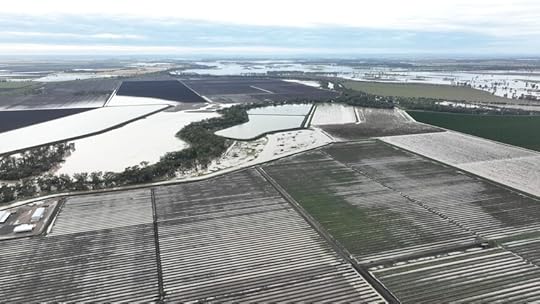 Crops on the verge of harvest have been wiped out.(Supplied: Rabbit Hop Films)
Crops on the verge of harvest have been wiped out.(Supplied: Rabbit Hop Films)New South Wales’s peak farming body says the damage bill for wheat losses alone in the state’s flood-hit north-west will surpass $150 million.
Key points:
Fourth-worst flood in Moree’s recorded history wipes out wheatNSW Farmers’ group estimates 120,000 hectares of wheat lost around Moree, totalling about $150 millionThe lobby group is calling for urgent financial assistanceParts of Moree, Gunnedah, Dubbo and Moama have been evacuated as more than 140 flood warnings remain across the state.
Agronomists say the grain-growing hub of the north-west is expected to have “conservatively” lost more than 120,000 hectares of wheat that was nearly ready to harvest.
The region also boasts large barley and canola outputs and is in the summer planting window for crops such as cotton and sorghum.
Look back on our blog for the latest news on flooding in Victoria, New South Wales and Tasmania
The NSW Farmers Association is calling on the federal government to bolster flood support payments in Labor’s first budget in this term of government.
The lobby group’s Grains Committee chair, Justin Everitt said the dollar value of the wheat damage is on top of approximately $42 million farmers spent to grow the crop, in a year where input costs have been extraordinarily high.
He said crops are “now drowning beneath floodwater” and may be a “complete write-off” if paddocks don’t dry out soon.
“You spend all this money preparing your paddocks, sowing your crops, fertilising and spraying them, only to see them wiped out a couple weeks before harvest. It’s heartbreaking,” Mr Everitt said.
“Farmers know they’re taking a bit of a gamble when they’re planting a crop, but this ongoing wet weather with flood after flood after flood is just unbelievable.”
…click on the above link to read the rest…
Climate crisis: UN finds ‘no credible pathway to 1.5C in place’
Failure to cut carbon emissions means ‘rapid transformation of societies’ is only option to limit impacts, report says
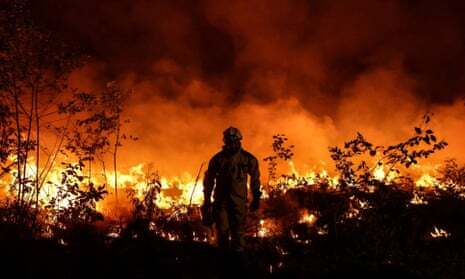 A firefighter sets fire to land in an attempt to prevent wildfires from spreading in Gironde, south-west France. A rise in global temperature of 1C to date has already contributed to climate disasters. Photograph: Thibaud Moritz/AFP/Getty Images
A firefighter sets fire to land in an attempt to prevent wildfires from spreading in Gironde, south-west France. A rise in global temperature of 1C to date has already contributed to climate disasters. Photograph: Thibaud Moritz/AFP/Getty ImagesThere is “no credible pathway to 1.5C in place”, the UN’s environment agency has said, and the failure to reduce carbon emissions means the only way to limit the worst impacts of the climate crisis is a “rapid transformation of societies”.
The UN environment report analysed the gap between the CO2 cuts pledged by countries and the cuts needed to limit any rise in global temperature to 1.5C, the internationally agreed target. Progress has been “woefully inadequate” it concluded.
Current pledges for action by 2030, if delivered in full, would mean a rise in global heating of about 2.5C and catastrophic extreme weather around the world. A rise of 1C to date has caused climate disasters in locations from Pakistan to Puerto Rico.
If the long-term pledges by countries to hit net zero emissions by 2050 were delivered, global temperature would rise by 1.8C. But the glacial pace of action means meeting even this temperature limit was not credible, the UN report said.
Countries agreed at the Cop26 climate summit a year ago to increase their pledges. But with Cop27 looming, only a couple of dozen have done so and the new pledges would shave just 1% off emissions in 2030. Global emissions must fall by almost 50% by that date to keep the 1.5C target alive.
Inger Andersen, the executive director of the UN Environment Programme (UNEP), said: “This report tells us in cold scientific terms what nature has been telling us all year through deadly floods, storms and raging fires: we have to stop filling our atmosphere with greenhouse gases, and stop doing it fast.
…click on the above link to read the rest…

